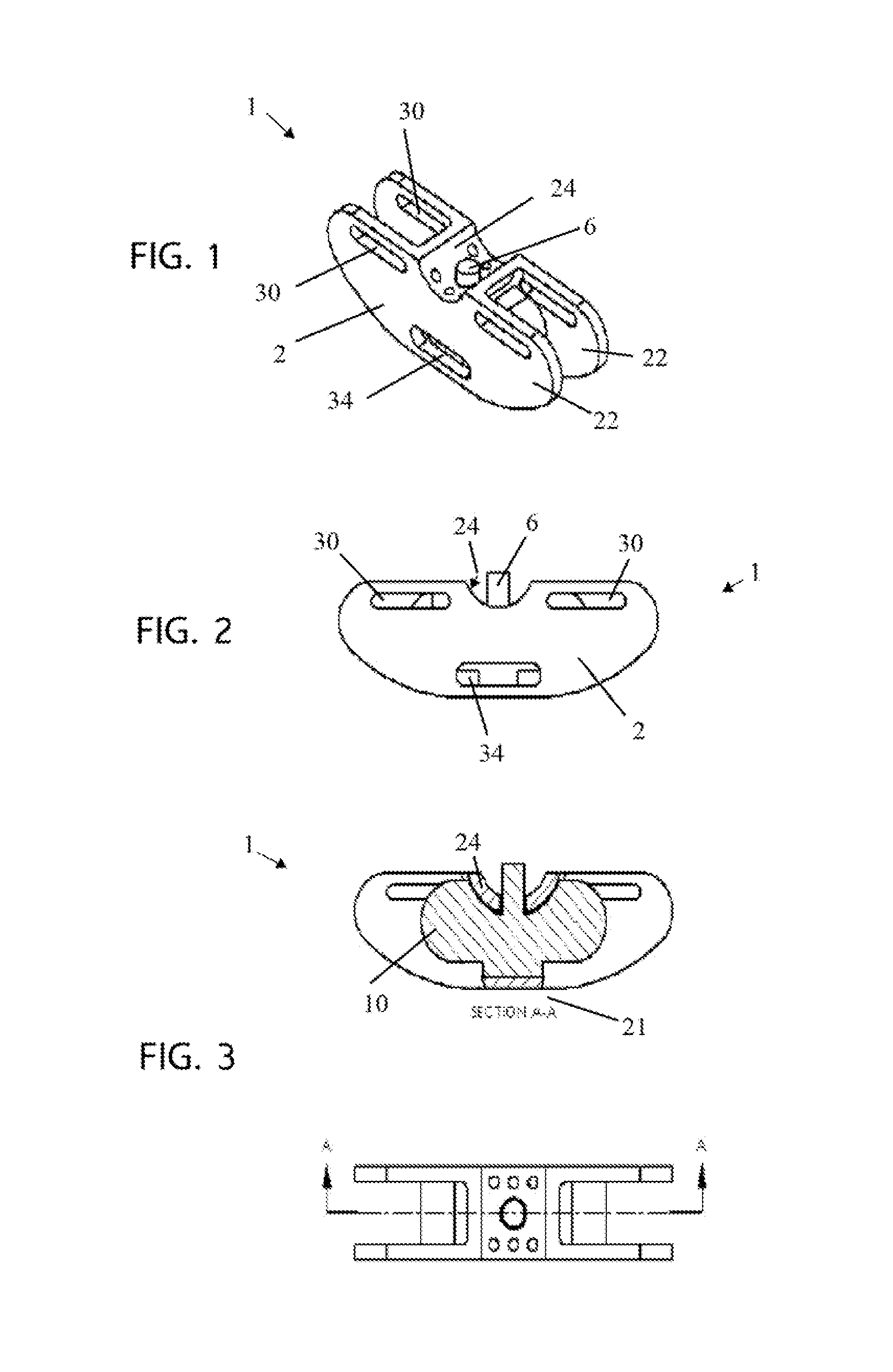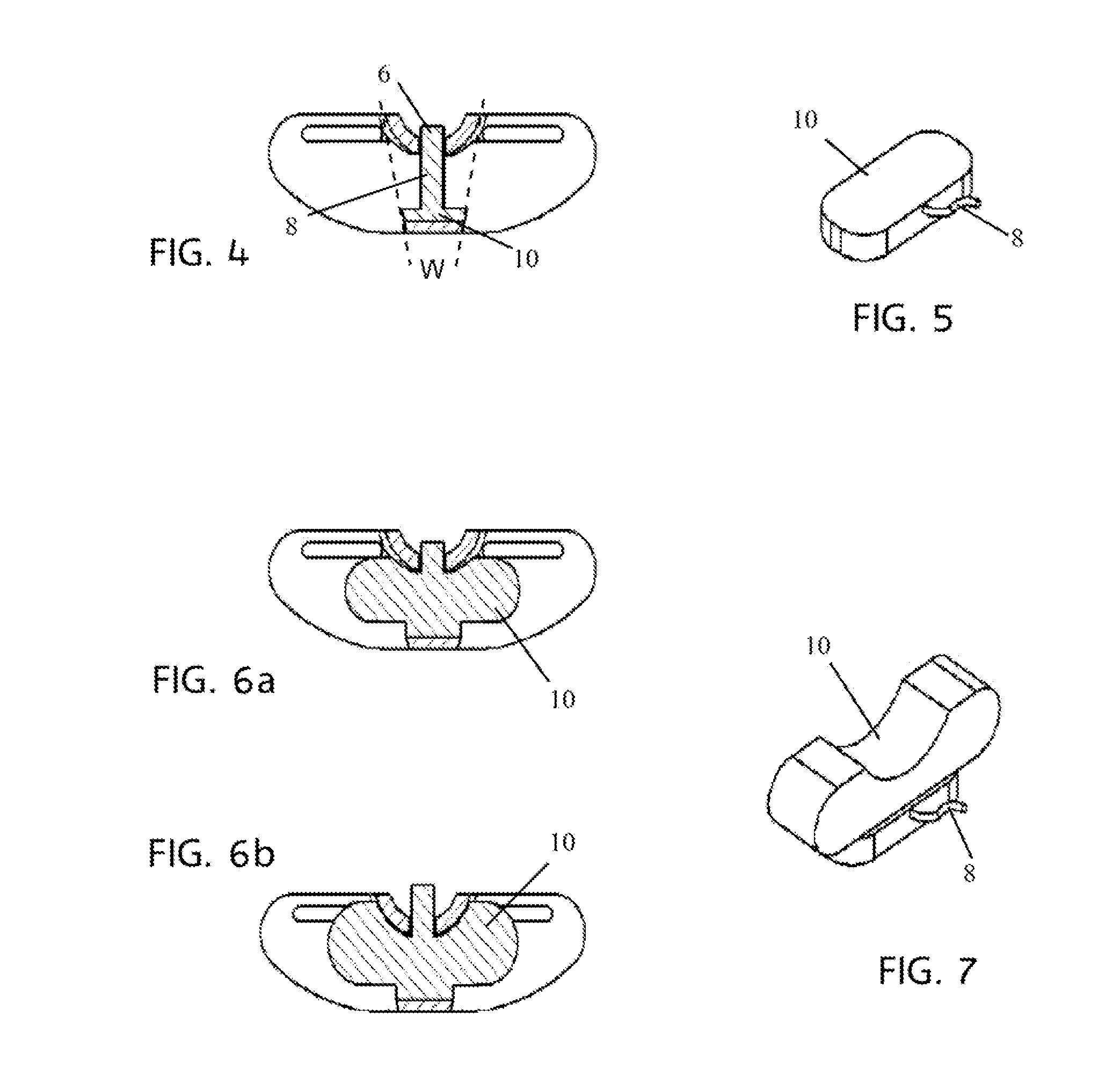Dynamic Inter-Spinous Process Spacer
- Summary
- Abstract
- Description
- Claims
- Application Information
AI Technical Summary
Benefits of technology
Problems solved by technology
Method used
Image
Examples
Embodiment Construction
[0029]With collective reference to FIGS. 1 through 8, an interspinous process spacer 1 having an anchor member 2 is provided. In the depicted, preferred embodiment the anchor member 2 has a generally C-channel cross section have opposing legs (or flanges) 22 of preferably equal length extending from a base member (or web) 24. The legs 22 are preferably orthogonal to the base member 24 but may be splayed outward slightly from the depicted 90° angle to accommodate vertebral physiology of the spinous processes in certain regions of the human (or other) spine. The term “orthogonal” as used herein is inclusive of such splayed angles (i.e. non-90° angles). The legs 22 are preferably splayed not more than 15° each on either side so as to maintain sufficient contact with the bone while not interfering with adjacent tissue structures and are preferably splayed from 5° to 15° and even more preferably 5° to 10°. Some resilience in the leg construction may also be provided and desirable to furt...
PUM
 Login to View More
Login to View More Abstract
Description
Claims
Application Information
 Login to View More
Login to View More - R&D
- Intellectual Property
- Life Sciences
- Materials
- Tech Scout
- Unparalleled Data Quality
- Higher Quality Content
- 60% Fewer Hallucinations
Browse by: Latest US Patents, China's latest patents, Technical Efficacy Thesaurus, Application Domain, Technology Topic, Popular Technical Reports.
© 2025 PatSnap. All rights reserved.Legal|Privacy policy|Modern Slavery Act Transparency Statement|Sitemap|About US| Contact US: help@patsnap.com



